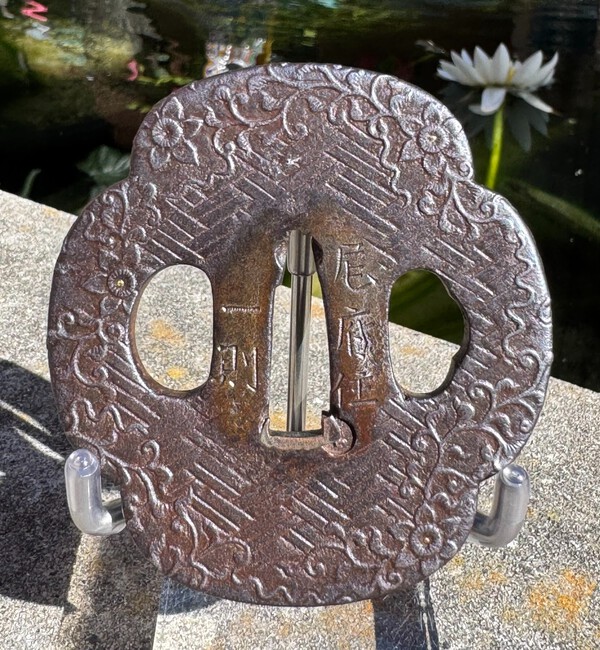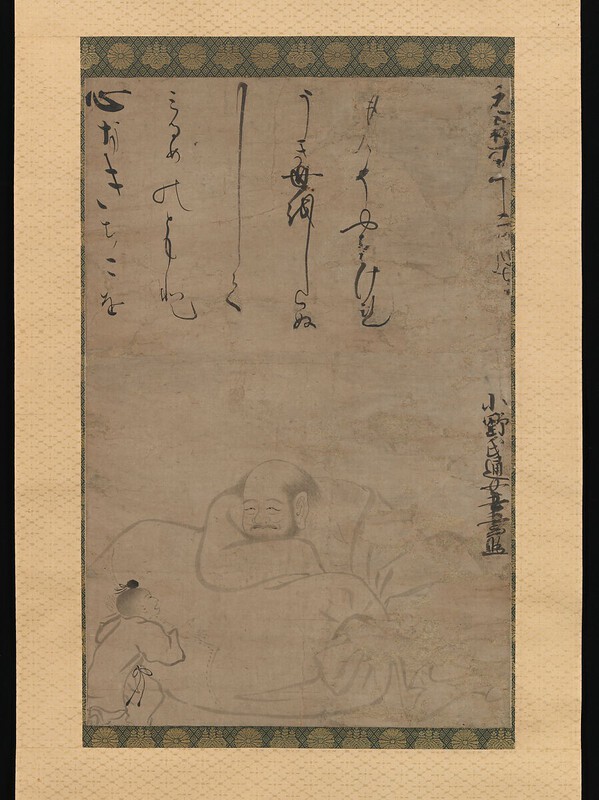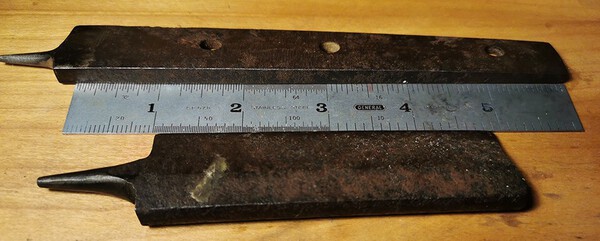Leaderboard
Popular Content
Showing content with the highest reputation on 01/04/2025 in all areas
-
AKA “opening a window”. A QUALIFIED polisher will select one or more locations on a blade and PROPERLY polish just that area(s) until activity can be seen so blade can be evaluated. Now… why do I say QUALIFIED? Because they also know how to polish the window so that if the blade warrants a full polish, the window they previously polished isn’t detrimental to the future full polish.7 points
-
I can't help but feel mystified, amused and slightly pissed...all at the same time over this plodding thread and the provocateurs, be them newbies or rainy day members. Either your a member of NMB because you believe in the concepts, traditions and eloquence of Nihonto collectors/guardians, or your not. There really is no grey area here. There are a plethora of other sword forums available that will stroke DYI egos. Hell anyone can go onto Facebook/ twitter/ etc. and get all the "likes" one is clamoring for. Don't forget to take the obligatory pic's too. Can we just stop reminding everyone of the obvious and stop beating a dead horse. Is it maybe, just maybe, possible to put an end to this relentless, pointless drabble of a thread? Mark6 points
-
Amusing thread… I debated mentally whether to chime in or not (with the passage of time I more and more tend to just read and tolerate things I disagree with, since life and mental health are more important…) @Dan tsuba Tsuba Iconoclast Dan: I will only say here that treasures can be found on Ebay by those who have the knowledge to do so. I have two friends who have found very high level blades by top saijo Koto smiths on that marketplace. Personally, I have not managed on Ebay but have had some modest success dabbling on Yahoo Japan (even more treacherous…) Have a read of this thread here: This is probably before your time on NMB….Anyway, the knowledge possessed by the protagonist led him to acquire a masterpiece in this auction, have a window opened by a polisher and then sent to Japan for top-level restoration. The blade went on to get Juyo etc etc. The same I think happened to another one in the same auction…. Years later another friend found on Ebay a nice tachi, etc. I see various people trying their hand at “removing rust”. I try to discourage it but people often have their own pre-formed inveterate views, which cannot be altered. It is true that there are low-value swords which will probably never be restored professionally and will probably languish in a sad state. One could strip the active rust with choji oil etc, perhaps get a window done….etc Newcomers in particular should be discouraged from such attempts, despite their being skilled in other hobbies, having a dab hand at other handicrafts etc. It is as simple as that.5 points
-
Guys, that is clearly missing inlay... they are in the shape of shi shi !! There is no alternate construction there, just Suemon-zogan that has been lost4 points
-
Jean made an important point. Rust isn't a surface build up. It's part of the steel. For rust to form, metal is lost. That means that removing serious rust leaves a surface covered in micro pitting, which usually looks worse. Oil will stop rust. You don't need to remove all the rust, just stabilize it and stop it from forming. If you want to get rid of rust without anything abrasive, Evaporust will do it. The surface left will look pitted and worse in most cases. That's when people are tempted to use sandpaper to get rid of the pitting. And so it begins. Stabilize the rust. Oil and wipe. Over time, the rust will get less.4 points
-
One of things that really bothers me about the world we now live in, is the premise that for every rule there is ALWAYS a loop hole. This is why laws are a joke now. No matter the law, theres a lawyer somewhere who has found a loop hole to exploit which frees his client from consequence. This thread seems to be no exception. First let's dispel the obvious. When someone is looking to buy and old rusty nihonto, they have already made up their mind as to what they are going to do with it. They KNOW their finances and whether or not they can afford restoration services. So the idea that someone buys a rusty nihonto and then has this internal contemplation of whether or not they should attempt any level of restoration is, IMO, unrealistic. So, let's say you (a complete novice) bought a rusty nihonto because the price seemed too good to pass up. What do you do now? You find your way to NMB as many do and post pictures. Those with wisdom and experience here tell you the blade is in too poor condition to give any information and so its advised for you to have a window polished. At this point you can do one of two things. You can ignore this advice and attempt rust removal yourself, effectively severing any assistance in doing so by members here, or, you can have a window cut and those same members here will be happy to review the pictures and provide more information. Either way, the choice is yours. What is being suggested here by some, so far as I can tell, is that NMB should carve out a loophole and start providing evoporust type recommendations. Really? The issue here is very simple, where does NMB draw the line? If you advocate for DIY restoration at ANY level, fine. But be prepared for that loop hole to be used to solicit additional info on DIY restoration and now we are SBG. Word gets out that the accumulated knowledge of NMB is now open for every novice to come in a flood the boards with the same question, "how do i take this rust off my blade?" Members here either want this or they dont....simple issue, simple answer.4 points
-
What I would like to focus on in this section is an unexpected finding that I made when I examined, in detail, an apparent "texture" to the chisel technique in the execution of the mei that stood out when photographed in sunlight. Now, it may be a known technique, but it certainly surprised and delighted me. Rather than describe the finding, let's take a look at some pics, which also reveal that the surface appears to be covered with very fine tekkotsu that give the appearance of rust in direct sunlight. In sunlight, it appeared that the chisel technique for the single horizontal stroke of the kanji "kazu" was serrated. Under stereomicroscope (Fisher Stereomaster) the kanji in the mei look like they were chiseled with a very fine tool oriented in the direction of the stroke with very fine chiseling to achieve removal of iron in a sequential manner, but with a constant depth. What kind of control would this require. How remarkable. Has anyone else seen such a technique used in the carving of mei? I don't even know what this is called.4 points
-
Dear Mark. While I hesitate to disagree with my two august companions I fear that I must. It would be useful to see the whole of the nakago but no habaki shi would mark the nakago to show where the habaki should finish and I think the presence of kiri yasurime above the line confirms this as there would be none beneath the habaki. Nor do I think that a loose seppa would cause wear as they are almost universally made from copper, sometimes foiled in shakudo, silver or gold. In any of these cases it would be the much softer metal of the seppa that would take the wear. Having said that I certainly own blades where the prolonged wear from an iron tsuba has caused a shallow and slightly diffuse groove but not one with the characteristics of the example that you show. Example here. Assuming that we accept that this blade has had suriage performed then I believe what you are seeing is where the shape of the nakago has been adjusted to ensure a good fit in the tsuka and for the habaki. If you are interested in exploring this more then 'Facts and Fundamentals' has some enlightening sections on the nakago though I have not found a specific name for the clear change in yasurime that you illustrate. All the best.3 points
-
Oldest one in existence is tachi by Naminohira Yukimasa dated 1159. The second oldest is tachi by Bungo Yukihira that is dated 1205.3 points
-
3 points
-
OK Dan, sobriety has returned so I will answer. First I will explain that I am not a purist “blade man”. I collect Japanese swords in their complete state with untouched koshirae. Expensive blades in shirasaya are not my thing. That means I can tolerate blades that are not in perfect polish. I prefer the polish to be Japanese but old and a bit scuffed is still fine. I will also buy swords where the blade has perhaps been cleaned inappropriately at some time provided there is no serious damage and provided most of the detail is still clearly visisble…usually there is a nice koshirae involved to justify the purchase, or it’s a really desirable package….ito maki no Tachi etc. So….to answer….i do not buy blades in the state you illustrate thus I don’t need to do much to them. I have used oil (sometimes WD40 type) and various toothpick type things to dislodge any thick encrustation and then simply keep applying gun oil and eventually the rust becomes black and inert and that’s fine. I have persisted with repeated uchiko but frankly it takes forever and I usually resort to just oil again. I have some success with that method though….recently on a Showa Tanto…but it makes your arms and hands hurt like hell! However, being honest and going back over 40 years in the UK all sorts of stuff went on largely fuelled by the type of ignorance or impatience or over-confidence that is being discussed here. We have never had sufficient polishers over here so you can “fill in the blanks”. However using unqualified “improvers” back then was not limited to the “ignorant”. I was well aware of Token Society members seeking unqualified assistance……and some members even trying it themselves……but times have changed so we will leave sleeping dogs alone to continue sleeping.3 points
-
You guys do this for FUN? - [I am totally in awe - I am also totally dyslexic when it comes to reading Japanese!] Thank you all so much for the effort!3 points
-
Quick note that Jōshū 城州 here refers to 山城 Yamashiro in Kyōto. No. 6 may be 保高 Yasutaka.(?) No. 3 The last Kanji must be the old word for sei in sakusei. 製 作製 (作成) made by3 points
-
If you're afraid that a blade in your care is actively rusting badly, a thick saturation of good quality gun oil is harmless, easy, and will stabilize it substantially by excluding oxygen. I gather that uchiko and a rag is uncontroversial for significantly out of polish blades. I've used it myself, it at least allows one to see the hamon somewhat, and while it may as others have described elsewhere harm a blade in good polish, I find it difficult to see how how anyone could meaningfully damage an already scratched or corroded blade with it.3 points
-
As has been said before, it all comes down to knowledge. When I read that someone wants to get rid "only" of the rust on a blade without grinding/polishing, it is apparent to me that this person has absolutely no understanding that rust is not a layer on top of the steel like a paint, but the steel itself which has turned into iron oxide. Of course there is superficial and deep rust, but to prevent further corrosion, you have always to grind down to the bare metal. Without basic knowledge, you should keep your pinkies off any metal object.3 points
-
I don't need to think, I can see. Your question was already answered on the first comment but I don't understand why you can't accept it. Working on a new book maybe? Best.2 points
-
First things first. What are the reasons that we're buying $100 blades caked over in rust? Curiosity? Chance? Opportunity? Temptation? Boredom? Material fix? Did we see something that wasn't there? Did we see something that we recognized? Was any of the decision making based upon real kantei analysis? The answer or answers to these question will probably determine what comes next. An experienced collector will have bought the $100 dollar rusty blade for one or more specific (objective) reasons (other than it was cheap). An experienced collector will be prepared to send the rusty caked over blade as is unless directed to do otherwise directly to the polisher, knowing that it will give the polisher the most material to work with thereby increasing the chances of a successful restoration of the blade. An added perspective based on experience. Desire is the cause of suffering.2 points
-
@Dan tsuba if you judge the quality of a post by the number of views you better go on TikTok... The value and quality of a post is not measured in that way here! Luca2 points
-
For something possible for normal collectors I would recommend looking into Bizen and the "unpopular" schools/smiths. I think these are pretty much the only option to get a fairly cheap dated tachi from 1300's. For tachi I would recommend 3M yen budget and for short blades 1,5M. I think this might be the only affordable blade dated in 1300's that is currently available. Morimoto dated 1362-1368 (as actual year is unreadable). Asking price is now 900,000 yen. What is to be noted that this is the 5th dealer that has had this blade for sale in fairly short time. It first popped at 380k and I wanted it, still wanted it at 550k... Now currently at 900k it is not that appealing to me anymore. https://www.e-sword....isashi/2410-2021.htm Here are few other short swords. Just note that historical prices on sales ads would be much higher today. https://www.aoijapan...safune-ju-morishige/ https://www.kandatou...tou/wakizashi16.html https://www.aoijapan...ai-5-nen-nigatsu-hi/ Then some long ones. I know I really wanted this one. I was actually saving money for it when it was with different dealer. Then it appeared to Aoi at lower price later on. https://web.archive....-hidemotsumasamitsu/ This one was also one I considered as plausible buy when it was with another dealer. Then it vanished and Meirin had it for much higher price https://web.archive....swords2/KT222174.htm Yoshii is a school to keep an eye open for, not highly appreciated https://www.samurais....jp/sword/08119.html2 points
-
Greetings, I stumbled upon this short, but informative article over on Warrelics written by the late Nick Komiya. I have't found this particular article shared before on NMB. The article on parade swords starts about half way down the 1st page of the thread. Of particular note, is the switch from nickel to chrome plating and the re-using of old parade swords to conserve materials. Dummy Sabers In the Shadow of the Samurai style Gunto2 points
-
2 points
-
2 points
-
2 points
-
This has been an interesting thread, seeing examples. To some maybe just another "Daisho" thread. We all have our own perspective, personally gained some clarity on the subject and at the same time asked myself a lot of questions. Seeing swords from 1985 with Hozen was somewhat a surprise. Left asking myself about how many papered "Edo" koshirae are actually from the "Edo"?. There really is no certain way of knowing without some kind of provenance. People are interested in "Daisho" nowadays, obviously by such discussions. Assume people were interested after the Edo period, 1880, 1900, 1940, 1960 etc etc. So without provenance then i think its fair to say that a papered koshirae doesn't necessarily mean it is an old antique Edo assembly. You can look for clues, as discussed already, stuff like tsuka and saya that appear to have no age. I guess you need to take a real close look, whether been restored, whatever. Then you take a closer look at the swords. The pair Guido own being as close to the real deal as your ever going to find. When you think about it, it wouldn't be difficult in this day and age for someone with access to a lot of paired Daisho fittings to put something together. Wouldn't be difficult to find two swords, lets say a Tadayoshi Katana and wakizashi of similar type. Not something i would take on as know what a pain in the ass finding the right tsuba with the correct fit can be, let alone finding two tsuba to fit two swords well. On top of that all the costs for other fittings and assembly. Personally, now don't see anything wrong with this, would see it as legit as buying a papered Daisho that has no provenance, so long as its done well with good fittings. Also wondering why we don't see so many with provenance. Occasionally come across Brit antique weapons of the same era with some kind of family provenance. One of the reasons that springs to mind is that dealers simply split them up to increase profit. Anyways, been interesting and finally got my head around what i would be willing to live with and be clearer on how to question what is out there in the future.2 points
-
Dan, This isn't personal and my comments are targeted knowing that there will be a wide audience including the inexperienced looking for information. 1.Good! Don't! 2. Someone reading the fact that you bought a $100 wakizashi and tried to remove the rust might be encouraged to do the same, don't you think? 3. hmmm. p.s. most of the topics that have come up here in this thread have already been discussed. Put the search feature to use!2 points
-
Thanks Jake. I know the feeling. I'll post some better quality images of the piece once I've got it in hand. Thanks to all who contributed! 🙇 Damon2 points
-
2 points
-
Rakutō (East Kyōto). So Kyōto is the right location 城州愛宕郡洛東住 (Jōshū Otagi-gun, Rakutō-jū) but I can't find the smith. I also suppose its Yasutaka 保高, but Wakayama is a bit inconclusive on it. He lists two smiths using those kanji, but doesn't mention location for either, or typical mei styles. He just notes that both are late Edo.2 points
-
開眼子 (literally, "child with opened eyes") is the "art name" of the artist, Kanezui. The use of "child" in the art name, and the image of the child on the tsuba, is coincidental. The theme of Hotei with a child (particularly, a child in Chinese dress from the Tang dynasty) is an often-used motif. You can find other examples if you search for Hotei with Tang-dynasty Child (布袋唐子). I don't know the meaning or the origin (well, I guess the origin is Tang China).2 points
-
Arghhh, this latest discussion is a tough one for me! I have been (and probably still am) that enthusiastic amateur that wants to fix the cheap but old items in my care, and consequently I have then gone on to do lasting damage to some of the things I've worked on. Regret is a very tough way to learn lessons (and a stupid one if there are other ways to gain the same knowledge). I completely agree that if you have the money, send things off to be professionally restored! If you don't yet have the money, then save up! The only edge case (which I think some people are ignoring here), is what should you do if you don't have the money, but the sword is continuing to be damaged by its condition? As much as we really don't want to advocate for people to try and restore their own blades (gods forbid attempting a full polish etc) I do think there is ethical grounds for trying to stabilise rust if you can't afford a polish in the near future. Should that only be through the use of oil, uchiko, and perhaps bone/antler picks? If so, I do think we should have some standard advice we can give new members about what to do in such a situation rather than shoot them down or give them the silent treatment (which I doubt will help do anything but encourage them), while at the same time informing them of red lines they shouldn't cross (using a stone, sandpaper, wire, cleaning the nakago etc), so minimising potential risks to the blade while still giving them something to do about it. (I think the earlier comments on this thread replying to Thomas's question on the tanto handled this well, before the recent revival) I also really like Aaron's suggestion about directing people to polish rusty old yanagiba and deba if they really want to try their hand at it.2 points
-
Try, try, again. 1. What is being said is that sooner or later someone is going to come along and try their hand at polishing a piece without realizing that the $100 rusty piece was in fact something very special. Nothing more! Which is why amateur polishing cannot be promoted and or supported in a public form. It needs to be further emphasized here that even people with advanced knowledge of nihonto sometimes make serious errors in judgment. Metal once removed is removed. Me. But that's not what this is about. This is about amateur polishing. And actually, Dan, it makes a lot of sense to someone who knows and understands why.2 points
-
Guess we getting closer…me and my eyes are tired. Next try tomorrow…🥱2 points
-
Here is a chunk of a spine missing from Nanbokuchō period naginata that has been attributed to Ko-Uda. It is about 2 cm piece missing. I know for many flaw like this would be unacceptable but it doesn't really bother me. I will rather have flawed item like this that I like in my collection than a pristine item that does not interest me.2 points
-
2 points
-
Being realistic, I don’t think we as a Forum can do anything that will significantly change things. It is the restriction on the number of swords that a modern smith is allowed to make that creates the difficulty so perhaps we should be looking to lobby the Japanese Govt. to change these restrictions? ….but in reality….it would be to no avail. It is bizarre that artificial restrictions are imposed on some of Japans most talented artisans that are admired the world over. I wonder if the NBTHK or any other Japanese sword organisations have tried?2 points
-
This is 100% Benkei, cut and dry! I was watching this tsuba myself but the auction was not at an opportune time for me unfortunately. Great pickup!2 points
-
I just won an auction of my first tsuba today and would like to know if my guessing is right. I did some research and I think that its Hotei guiding a child through darkness, but as I am totally uneducated on this kind of stuff, I would like to know if there's some other story behind it. The writing on the right says "Child with opened eyes" or "open your eyes", at least that's what Google translate says. Thx.1 point
-
1 point
-
1 point
-
With the help of Curran, I have been studying the only tsuba I have that has a mei. It is made by Kazunori, who was a likely student of Shodai Norisuke and a contemporary of Nidai Norisuke based on Curran's expert speculation. The masters of this school were renown for their utsushi-mono of Nobuie, Yamakichibei, and Yagyu, as well as tsuba in their own distinct style. There is only one other that I have seen with a mei that has Kazunori (一則) engraved on the left side (Owari To Mikawa No Tanko, page 59). Mine has additional engraving on the right side to complete the name Kazunori Obu-Ju (尾府住一則), which clearly identifies him as a smith working in Owari Province. This piece is circa 1830s or 1840s when Shodai and Nidai were making tsuba with carving that wrapped over the mimi (so-called daki-moyo stye). My full write-up is attached. Owari To Mikawa No Tanko (page 59) Norisuke school Kazunori Obu Ju (Arabesque and Wickerwork.pdf1 point
-
1 point
-
Jussi…..you sure that is a flaw and not some type of impact damage? Is it possible that a glancing blow from something either heavy or sharp or both could have caused it? Or rather than being hit, could it have hit something?….a stone wall corner, a boulder/rock…? Just doesn’t look like a forging problem, one end is very angular and appears to have shock cracks coming off it. Don’t know….can you get better sharper image?1 point
-
1 point
-
Below is the citation for the recent Plimpton book. This is a sword only book and thus no coverage of Japanese dirks. I would recommend acquiring a copy of the 1997 F&G book first before the Plimpton book. Plimpton, John E. Swords of the Emperor: A Guide to the Identification of Imperial Japanese Swords, 1873–1945. Nashville, TN: Headstamp Publishing, 2022. Swords of the Emperor (Standard Edition)1 point
-
Really nothing to suggest Momoyama kanayama or ono tsuba. If it is Owari at all, it is very late. Anchor motif is definitely late. Maybe a homage piece.1 point
-
The set at Mandarin Mansion is amazing and owning a set like that would be great. To me it is a daishō set in total regardless what the NBTHK says. The blades were sent to NBTHK together but papered separately, hence the successive numbering. So theoretically the swords are not daishō without the koshirae, so they didn't paper them to same paper. You can also see this successive numbering sometimes when dealers have sent in items as their items have rolling numbers. Looking at the pictures both blades are very high quality and the daishō koshirae seems very high quality so an amazing package.1 point
-
Looks like Minamoto Yoshitsune and Benkei on the Gojo bridge…..they had a bit of a disagreement there.1 point
-
I,m an entry level collector, have 1 Nihonto Waki and 3 Gunto's. I know this isn't a $1000 blade, just want to know the age and some blade teminology. Thats all, my grandma is also dead but I still love her...Thought this was a forum for all Japanese sword collectors, not only for connoisseurs. Thanks...1 point
-
1 point
This leaderboard is set to Johannesburg/GMT+02:00


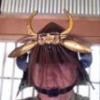
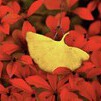



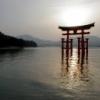



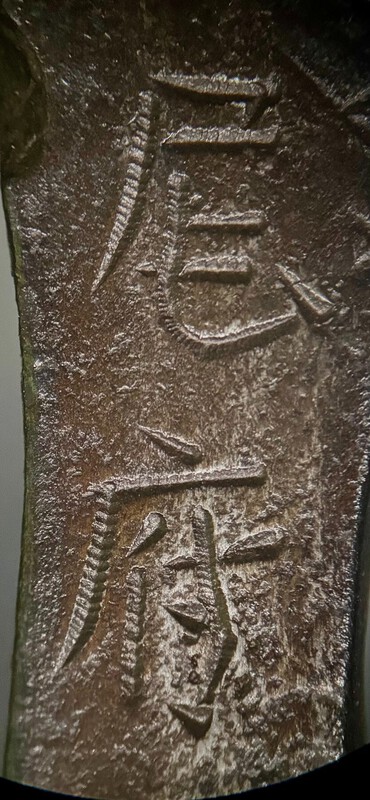



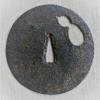

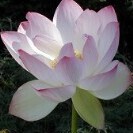
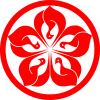
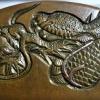


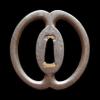

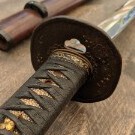



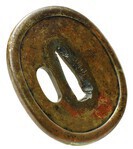

.thumb.png.4c5df79fec171b2dc4a23af38e280a4d.png)


